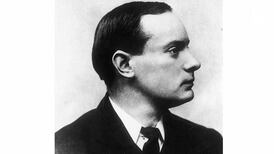Among this week’s anniversaries is the 300th birthday of John “Gentleman Johnny” Burgoyne, incompetent British general and talented playwright.
In the former role, he has gone down in history as “the man who lost America”. In the latter, he collaborated with Dubliner Richard Brinsley Sheridan, his good friend, and had solo hits including The Heiress (1786), displaying a comic talent for which some admirers believed posterity might forgive his military record.
Horace Walpole was one of those. “Burgoyne’s battles and speeches will be forgotten,” he wrote towards the close of the 18th century, “but his delicious comedy The Heiress still continues to delight the stage”.
A contrary view was put by Elizabeth Inchbald, novelist and actress, who in 1808, while admitting that even Burgoyne’s formal surrender to the Americans was impeccably written, argued it would be better to “have beaten the enemy and misspelt every word”.
What’s with the name? – Frank McNally on O’Doul, O’Day, and other nominal oddities of Irish America
Far away, so close – Fionnuala Ward on measuring distance
The Derry man who influenced George Washington and Alexander Hamilton - Brian Maye on Hercules Mulligan
The BBC’s national question: Frank McNally on Edna O’Brien and ‘the North of Ireland’
Surrendering the colonies may not have been entirely his fault anyway. But after the decisive Battle of Saratoga (1777), he was never trusted to lead a campaign again.
His name may ring a bell, or at least suggest one, for anyone who has visited the basement of the Irish Museum of Modern Art, housed in the former Royal Hospital Kilmainham. To get there, you have to pass “Burgoyne’s Bell”, which now sits on a floor beside the stairs.
His other legacies to Ireland include an illegitimate son, also John, who became a founder and first president of the (Irish) Civil Engineers’ Society.
John jnr may not, however, have owed the engineering talent to his father. Burgoyne’s Bell was commissioned when Gentleman Johnny was Master of the RHK. But it was always too heavy for the bell tower and soon decommissioned, hence its current lowly status.
***
A century after his death, Burgoyne turned up in the breakthrough work of another comic playwright, George Bernard Shaw.
The play was The Devil’s Disciple (1897), set during the Saratoga Campaign and revolving around the heroic Dick Dudgeon, who is about to be hanged – in gentlemanly fashion and with much wit – by the said British general, until saved by the turn of military events.
Not only does Shaw give Gentleman Johnny all the best lines, he exonerates him of the 1777 debacle, which is blamed on the non-arrival of planned reinforcements from New York. As Burgoyne explains to his sidekick, Major Swindon:
“Some gentleman in London forgot to dispatch them: he was leaving town for his holiday, I believe. To avoid upsetting his arrangements, England will lose her American colonies; and in a few days, you and I will be at Saratoga with 5,000 men to face 18,000 rebels in an impregnable position.”
Swindon replies, lamely: “I can’t believe it! What will history say?” To which Burgoyne replies: “History, sir, will tell lies, as usual.”
It will have been little consolation to Gentleman Johnny, but the Devil’s Disciple was a big hit on Broadway: the playwright’s first commercial success. Shaw, at least, had conquered America.
As for history telling lies, by the way, many sources have Burgoyne’s date of birth as February 24th, 1722. Others say it was February 1723. And those include his gravestone in Westminster, which may or may not be telling the truth.
***
Lesser anniversaries of this week include the 40th anniversary of another Broadway premiere, a theatrical atrocity called Moose Murders, which opened and closed on the same night: February 22nd, 1983.
Many other productions down the decades have had equally short runs. But Moose Murders earned a special infamy, to the extent of making minor celebrities of those who had witnessed it.
Frank Rich, the “Butcher of Broadway”, set the tone for that in his New York Times review, which began: “From now on, there will be two groups of theatregoers in this world: those who have seen Moose Murders and those who have not.”
A pithier verdict was from a woman who, leaving the theatre and meeting a policeman, shouted “Arrest this play!” Then there was the sensitive critic from Associated Press who refused to identify the cast “pending notification of next of kin”.
The unfortunate creator, one Arthur Bicknell, hoped its notoriety would wane in time. Instead, the millennium arrived and renewed interest, with one magazine listing it among the greatest failures of the 20th century, alongside the Ford Edsel and New Coke.
But it wasn’t like he’d lost a war or anything. And whereas merely mediocre works would indeed be forgotten, the famed awfulness of his moose-turned-turkey gradually encouraged interest in a revival.
Bicknell has since rewritten the work for an off-Broadway production. As if to prove that you can get away with anything in America (except perhaps losing it), he also turned the trauma into a memoir, entitled: “How I learned to stop worrying and love my Broadway bomb.”
















